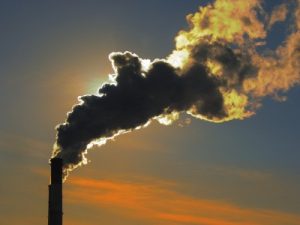Responding to two petitions for reconsideration, the EPA has issued a final rule extending several compliance deadlines under the National Emission Standards for Hazardous Air Pollutants (NESHAP) for the phosphoric acid manufacturing and phosphate fertilizer production source categories. The final rule also includes several technical amendments related to required monitoring and performance testing.
The EPA issued its NESHAP for the two source categories in 1999. In August 19, 2015, the Agency published amended rules that took into consideration the residual risk and technology review (RTR) required by Clean Air Act Sections 112(d)(6) and 112(f).
The Agency notes that 13 facilities are currently regulated in the two source categories.
RTR amendments
The RTR amendments to the phosphoric acid manufacturing NESHAP included numeric emissions limits for previously unregulated mercury and total fluoride emissions from calciners; work practice standards for hydrogen fluoride emissions from previously unregulated gypsum dewatering stacks and cooling ponds; clarification of the applicability and monitoring requirements to accommodate process equipment and technology changes; removal of the exemptions for start-up, shutdown, and malfunction (SSM); adoption of work practice standards for periods of start-up and shutdown; and revised recordkeeping and reporting requirements for periods of SSM.
The final amendments to the phosphate fertilizer production NESHAP included clarifications to the applicability and monitoring requirements to accommodate process equipment and technology changes; removal of the exemptions for SSM; adoption of work practice standards for periods of startup and shutdown; and revised recordkeeping and reporting requirements for periods of SSM.
Amendments following reconsideration
After it promulgated the RTR amendments, the EPA received petitions for reconsideration from The Fertilizer Institute and the Phosphate Corporation of Saskatchewan. Based on its reconsideration of the two NESHAPs, the Agency is issuing the following amendments:
- Changing the compliance date from August 19, 2016, to August 19, 2018, for superphosphoric acid (SPA) process lines. The initial date was effective 1 year from promulgation. However, the EPA was persuaded that sources needed additional time for the design and installation of equipment to comply with the total fluoride emissions limits.
- To address the issue of determining the liquid-to-gas ratio of low-energy absorbers, clarifying an option in the final rule and adding an alternative option.
- To address the issue of other available options to determine the gas flow rate through the absorber for use in the liquid-to-gas ratio, adding a new option to develop and use a regression model in lieu of measuring gas flow rate or using the blower design capacity option.
- Changing the compliance date for the low-energy absorbers monitoring requirement from August 19, 2015, to August 19, 2018. The initial compliance date was immediately effective, and the EPA proposed to allow sources up to 2 years to comply. However, sources told the Agency more time was needed for the design and installation of equipment and development of regression models; consequently, the final amendments allow sources up to 3 years to comply with the monitoring requirements.
- Restoring a provision that allowed the liquid flow rate at the absorber to fluctuate up to ±20 percent.
The EPA estimates the use of the monitoring alternatives in final amendments will save each facility about $80,000 and the regulated sector as a whole more than $1 million.

